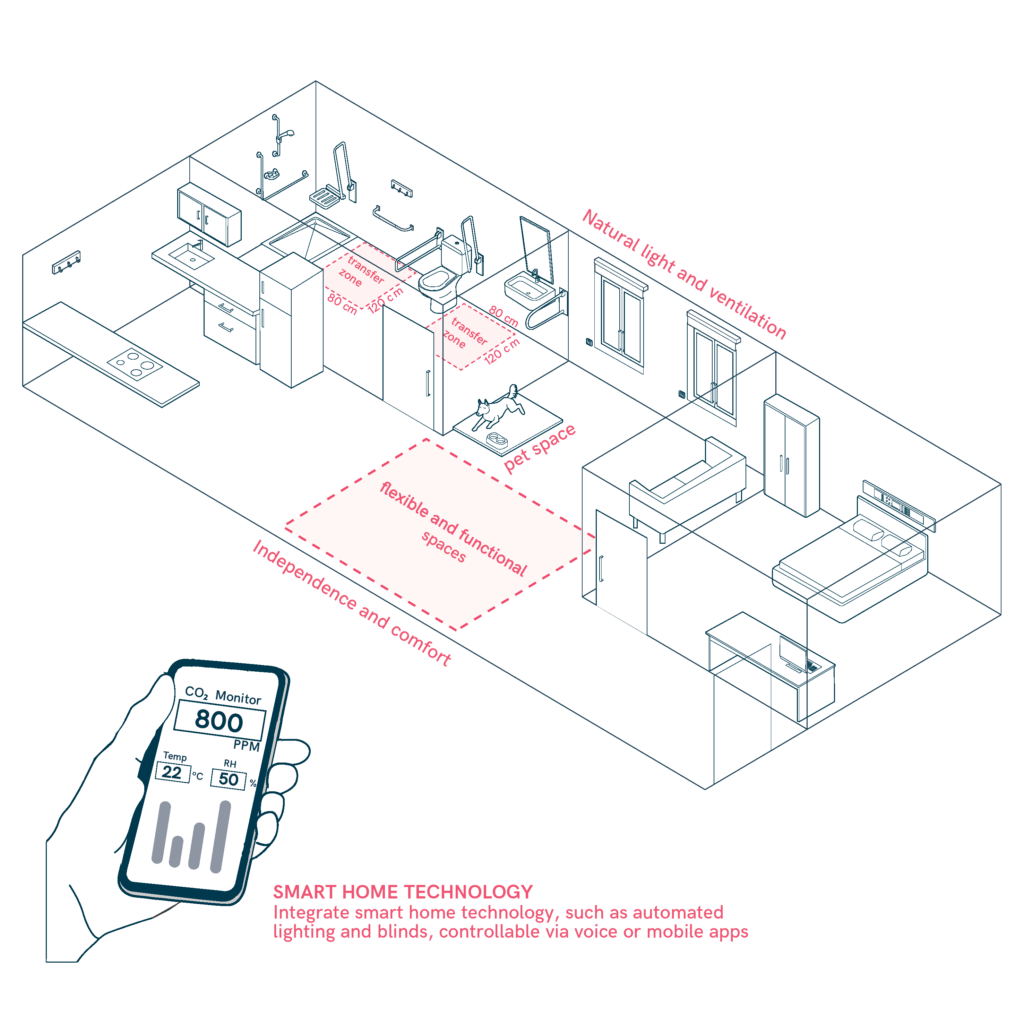Home
A truly inclusive home should be based on universal design, ensuring comfort and independence for everyone without requiring later modifications. This means considering, from the outset, the needs of individuals with reduced mobility, disabilities, or specific requirements by integrating both traditional and innovative solutions. In this way, accessible, functional, and aesthetically harmonious spaces are created, providing a welcoming environment for all residents.

- Adopt a universal design that eliminates the need for later adaptations, ensuring independence and comfort for all users.
- Consider the needs of people with disabilities, reduced mobility, and other specific requirements.
- Implement accessible solutions, both traditional (level flooring, wider doorways, ramps) and innovative (adapted furniture, accessible swimming pools, multi-purpose spaces).
- Prioritise natural light and ventilation to improve comfort and energy efficiency.
- Incorporate elements of traditional architecture, such as interior courtyards, to regulate temperature and optimise natural lighting.
- Design spaces that accommodate all household members, including pets, creating inclusive homes for every member of the family.
- Create flexible and functional spaces that adapt to different needs without compromising aesthetics. Homes should also prioritise the comfort of living in a welcoming environment.
- Use multifunctional and adaptive furniture to maximise comfort and accessibility.
- Integrate smart home technology, such as automated lighting and blinds, controllable via voice or mobile apps.
- Design a home that is easy to keep clean and organised.
- Build energy-efficient homes that provide a good quality of life for residents, regardless of their income.
- Carers
- Children
- Cognitive
- Cognitive abilities
- Decolonial perspective
- Digital
- Digital barrier
- Enviroment
- Environmental
- Gender and generations
- Gender perspective
- Hearing impairment
- Low-education
- Low-income
- Older people
- Other
- Physical abilities and features
- Sensory and Physical
- Socioeconomic
- Visual impairment